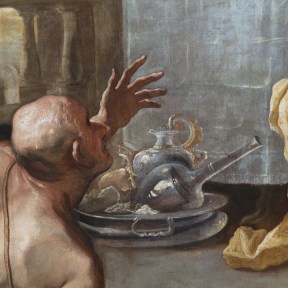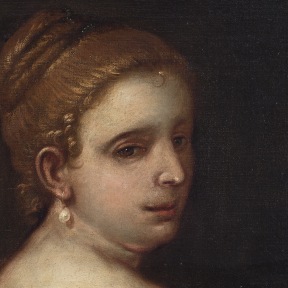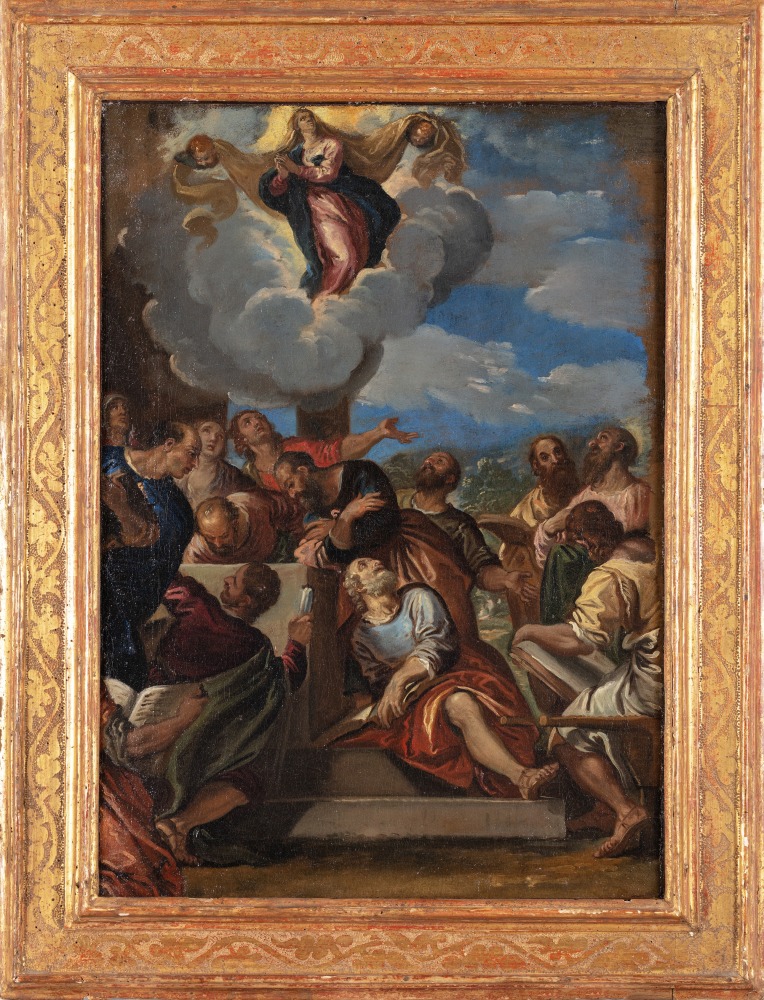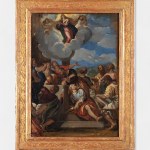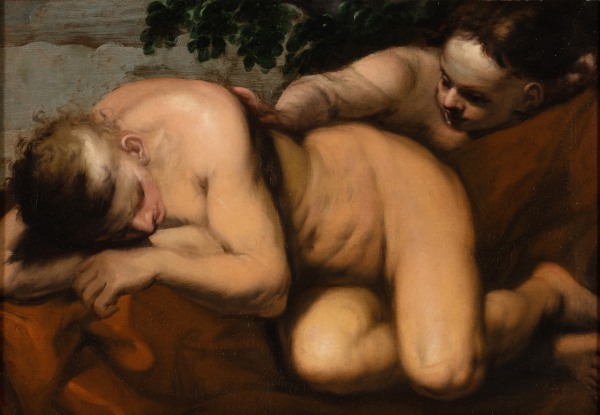-
Biography
Paolo Caliari also known as Veronese (Verona, Italy 1528 - Venice, Italy 1588)
Born in Verona in 1528 to the illegitimate daughter of Caliari, a noble whose name the artist adopted around 1550, he studied in the Verona workshop of Antonio Badile, marrying his daughter in 1566.
His style was strongly influenced by the Brescian painters in Verona at the time, Romanino, Moretto and Savoldo who, alongside the stylistic and cultural innovations of Venice, made the young Veronese into a well-defined artist who stood out for his constructive ability and chromatic tones.
Despite moving to Venice in the 1550s, the artist was influenced by the manneristic innovations and antiquity style of his first Veronese masters.
He certainly drew on the great Venetian tradition, inspired by Titian and Tintoretto, but preferred to remain loyal to drawing, which would always be a central and distinctive value to his artistic production.
Veronese distinguished himself from his fellow countrymen in the use of colour, never entirely adopting tonalism (a basic characteristic of Venetian painting of the time), preferring instead a clearer and livelier use of colour, with well-defined backgrounds.
His production falls within what is widely known as Mannerism.
For most of his career, Veronese worked for religious and secular patrons in Venice and the wider Veneto area.
Among his most important works are the life-size decoration of the Venetian church of Saint Sebastian, the library of Saint Marco and the Ducal Palace.
One of his specialities was large-scale scenes, including famous banquets. The most renowned is the biblical scene of the Wedding at Cana, transferred to a Renaissance Venetian banquet, now in the Louvre.
Paolo Veronese founded a large workshop, assisted by his brother Benedetto and his sons Gabriele and Carlo, who continued the studio after his death in 1588.
Photo UniCredit Group (Sebastiano Pellion di Persano)
-
Works
Paolo Caliari, known as Veronese (manner of) Italian, 1528-1588
Assunzione della Vergine, c.1590-1610Oil on canvas / Olio su tela / Öl auf Leinwand25 1/4 x 18 1/8 in
64 x 46 cmUniCredit S.p.A.Photo: UniCredit Group (Sebastiano Pellion di Persano)Further images
Join our mailing list
* denotes required fields
In order to respond to your enquiry, we will process the personal data you have supplied in accordance with our privacy policy.



